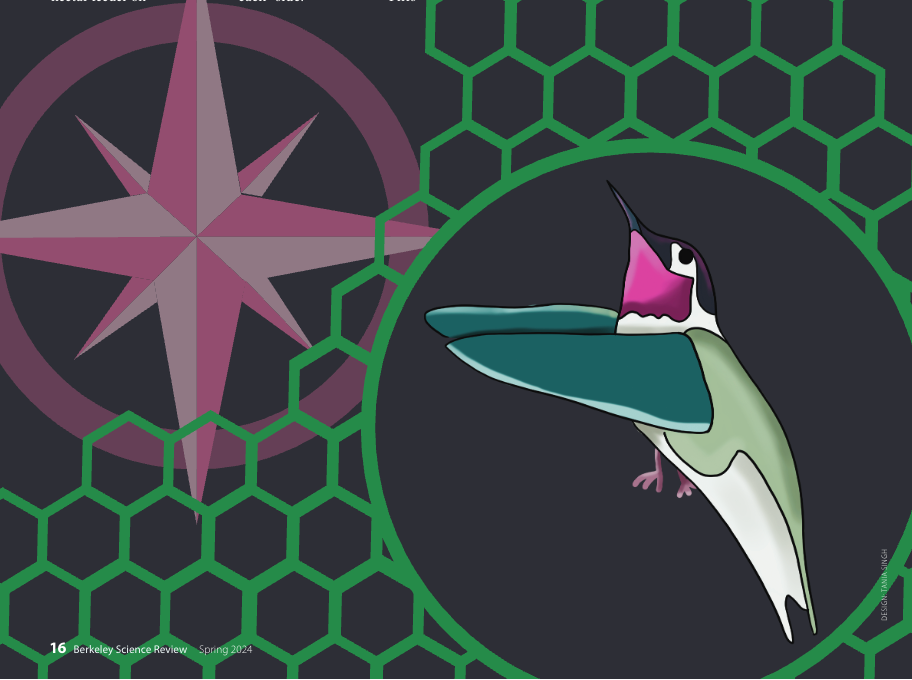
Designing an efficient flight machine? Look at nature! Evolution has generated some remarkable and efficient designs for mobility, but we’re still learning how they work.
Hummingbirds, for example, constantly maintain nearly full wingspan to hover or fly backwards or sideways on short notice. However, they often have to navigate dense, obstacle-ridden environments. Professor Robert Dudley’s group wondered how this works: given flight speeds comparable to their reaction times, how can hummingbirds consistently pass through new openings smaller than their wingspan? In search of an answer, the scientists procured a few hummingbirds, built a large chamber separated by a wall with an adjustable window, and placed a nectar feeder on each side. Incentivized by the food, the birds traveled through the window at speed. Two novel movements were discovered this way: the “asymmetric” and “diving” techniques. When encountering a new, small window, the birds employed the asymmetric technique by hovering, rotating, and moving through the window sideways, with the first wing lower than the second, hence “asymmetric.” For familiar windows, the birds employed the diving technique, speeding up, tucking their wings, and falling through the opening, head first. Diving was faster, but imprecise.
This aspect of biomechanics is a rich field that includes land and water navigation, too. If one of us eventually boards a flying machine that scuttles sideways to pass through an opening, we should all thank our feathered friends on campus!
This article is part of the Spring 2024 issue.





